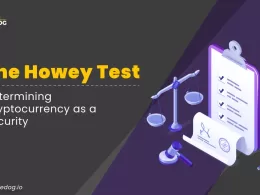Quick Links
In the rapidly evolving world of cryptocurrencies, Ethereum has emerged as a beacon of innovation, particularly with its shift towards a proof-of-stake (PoS) consensus mechanism. One intriguing aspect of this new era is solo staking – a process that allows individuals to participate directly in the Ethereum network’s consensus mechanism. This blog explores the nuances of solo staking, its significance, and how you can embark on this exciting journey.
Understanding Solo Staking:
Solo staking is more than just a means to earn rewards; it’s a commitment to the Ethereum network’s security and decentralization. Solo staking in the Ethereum network is a process where an individual runs their own Ethereum node and participates directly in the network’s consensus mechanism. This method of staking involves a deeper level of engagement and technical know-how compared to other forms of staking, like joining staking pools. A solo staker receives rewards directly from the protocol for keeping their validator properly functioning and online.
Understanding Ethereum 2.0 Node Components:
Execution Layer (EL) Client:
- The EL client, previously known as the Ethereum 1.0 chain, is responsible for handling the execution of transactions.
- It manages the state of the network, including account balances, smart contract states, and transaction history.
- This layer ensures the continuation of the original Ethereum protocol and its rules.
Consensus Layer (CL) Client:
- With the introduction of Ethereum 2.0, the CL client represents a major shift to a proof-of-stake (PoS) consensus mechanism.
- It is responsible for the process of creating new blocks and validating transactions in a more energy-efficient manner than the previous proof-of-work system.
- The CL client focuses on achieving network consensus without the high energy costs associated with mining.
The Steps to Become a Solo Staker
Setting Up the Hardware: The first step in solo staking is setting up the hardware required to run an Ethereum node. Running an Ethereum node requires a dedicated computer with robust processing capabilities, sufficient memory, and storage.
- A dedicated computer with at least a 4-core CPU, 16 GB RAM, at least 2TB SDD, and a reliable internet connection.
- 32 ETH.
- The Ethereum software.
Generate Keys: To become a validator, you need to generate a set of cryptographic keys. These keys are essential for the security and operation of your validator node. Once generated, these keys are loaded into your validator client to enable it to perform its functions in the network.
The 32 ETH Stake: To activate a validator, you must deposit 32 ETH. This deposit is a kind of “staking” where your ETH is used as collateral to ensure that you act in the best interests of the network. Misbehavior or failure to perform duties can result in penalties or loss of a portion of this stake.
Validator Responsibilities: Validators are responsible for proposing new blocks, processing transactions, and attesting to the validity of blocks. They must ensure their node is running correctly and is continuously online to avoid penalties or slashing (loss of a portion of their stake).
Ongoing Maintenance: Running a validator node requires ongoing maintenance and monitoring. This includes keeping the software up-to-date, ensuring the node is always online, and that it’s performing its validation duties correctly. Proper maintenance ensures that you receive rewards for your participation and avoid penalties.
The Rewards: Validators receive rewards directly from the Ethereum protocol for participating in the consensus process, which includes proposing and attesting to blocks. The rewards are incentives for validators to keep their nodes online and functioning correctly.
Why Solo Staking Matters
Solo staking stands as a pivotal avenue in the blockchain landscape, offering individuals a direct and independent role in securing networks and validating transactions. Its significance lies in the autonomy it grants, allowing users to stake their assets without reliance on external entities or pooled resources. This independence fosters greater control over investments, mitigating risks associated with third-party interference while promoting network security through individual contributions. By encouraging decentralization, solo staking aligns with the foundational ethos of blockchain, empowering users and enhancing the resilience of these ecosystems.
Moreover, solo staking presents the potential for higher rewards compared to pooled staking models, enabling participants to directly reap the benefits of their contributions. While it demands more initial effort and setup, the opportunity to earn rewards commensurate with one’s stake without sharing them among a pool of participants can make solo staking an appealing option for those seeking greater control, potential higher returns, and active involvement in blockchain networks.
Conclusion
In conclusion, solo staking represents a more involved and technically demanding way for individuals to engage with the Ethereum network’s consensus mechanism. It not only offers the potential for rewards but also contributes to the network’s overall security and decentralization, aligning with Ethereum’s core principles. Validators in solo staking are responsible for critical network functions and use cryptographic keys to ensure the network’s integrity and perform their duties effectively.









